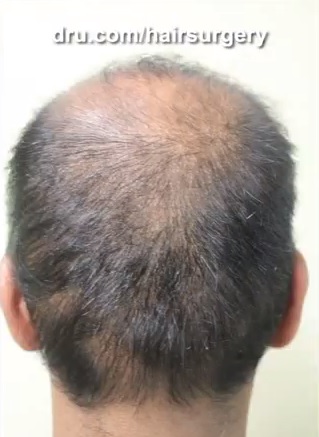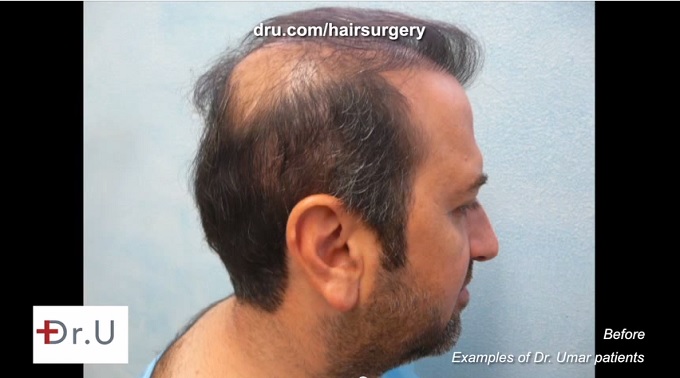Excessive FUE Donor Harvesting Avoided by Using Body hair Transplants and Proper Planning : Poor growth and unskilled hair insertions are common hair transplant mistakes. However, excessive fue donor harvesting regions on the back and sides of the scalp are another type of error that can occur in Follicular Unit Extraction surgeries. This tends to look like streaks or vast areas missing or thinned out hair. Therefore, patients are advised to to gain a general understanding of donor management and expectations.

 Patient shown from the profile view with a depleted donor region on the side of the head due to over harvesting*
Patient shown from the profile view with a depleted donor region on the side of the head due to over harvesting*Excessive FUE Donor Harvesting and Depletion of Head Donor Reserves
Following a hair transplant procedure, the donor regions of the head should look untouched. However, there are many cases where these areas are far beyond far beyond this limit. This occurs when the practitioner attempts to meet a very high donor requirement.
As an example, a practitioner may attempt to restore hair on a very advanced stage of baldness. Naturally, such cases will require a very large quantity of grafts to achieve appropriate coverage in the final outcome. In basic forms of Follicular Unit Extraction, follicles are harvested exclusively from the scalp. Therefore, an over reliance on the head sources for restoring more extreme cases of hair loss will result in a decimated donor area.
In more rare instances, a less experienced surgeon may try to satisfy a younger patient’s goals of creating an aggressive hairline. They may overestimate the number of grafts needed and harvest too many follicles. As a result, the patient may end up with a hairline that is placed too close to the eyebrows. And the back or sides of their head will show the overly harvested areas, where the scalp shows through
Donor Management – Setting Realistic Expectations For Head Follicle Sources
In the case of hairline restoration, a skilled and experienced doctor will be able to determine the best placement for the final facial frame. This should ideally be in alignment with aesthetic facial proportions and a strong sense of what will look best for an individual patient. And in the course of proper planning, the right number of grafts can then be ascertained.
On the other hand, if the patient has reached the point of severe baldness (Norwood 6-7 classification), head donor regions cannot be expected to provide a sufficient number of grafts to achieve significant improvements in coverage. It is important to be aware that 5000-7000 grafts is the maximum number that the scalp can provide for a hair transplant performed through Follicular Unit Extraction or strip surgery. And this quantity is not available in severe stages of hair loss. This is the reason why Norwood 6’s and 7’s are typically rejected by conventional hair restoration clinics due to their lack of head donor grafts.
However, the need for greater numbers of follicles required for restoring severe bald states can be met through the option of Advanced Follicular Unit Extraction through the removal of body hair grafts , if cloning is not available. Specialized instrumentation such as UGraft is needed to safely harvest non-head hair which grows at very sharp angles. It would also be vital to select a provider who not only has the capability, but also the experience to perform successful procedures.
Dr. U Discusses Excessive Donor Harvesting – Video
In Dr. U’s Q&A video series, he addresses the issue of donor management and over harvesting. Hear what he has to say:
